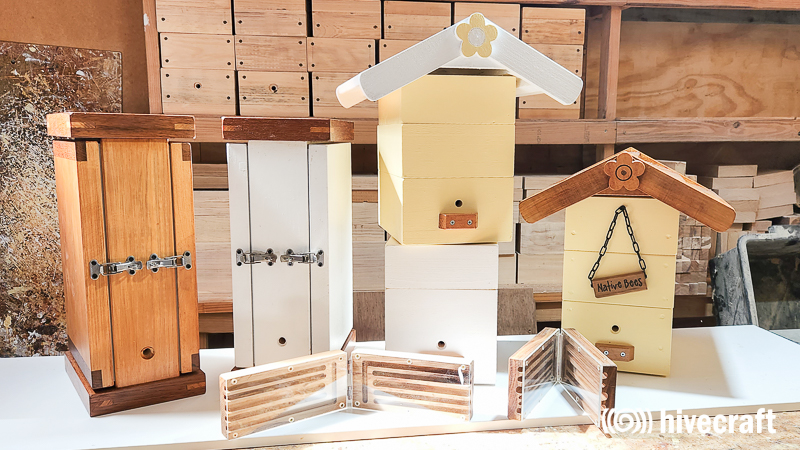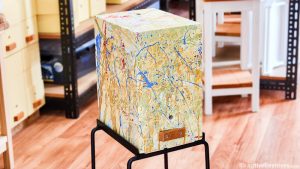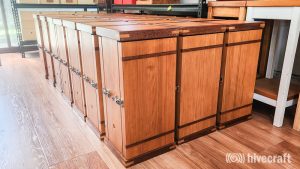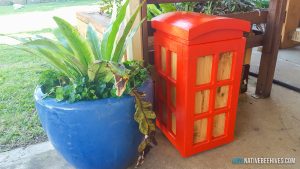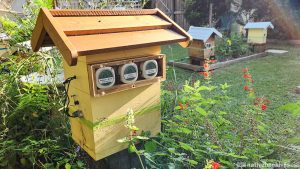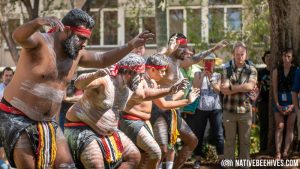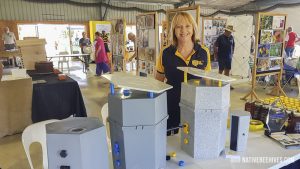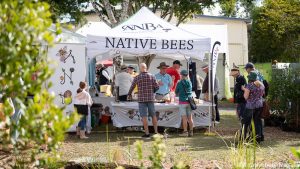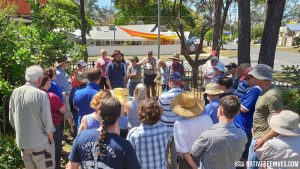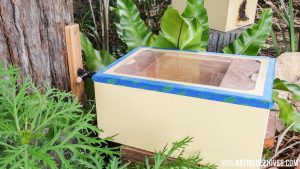Stingless Bee Workshop at Yandina Community Gardens
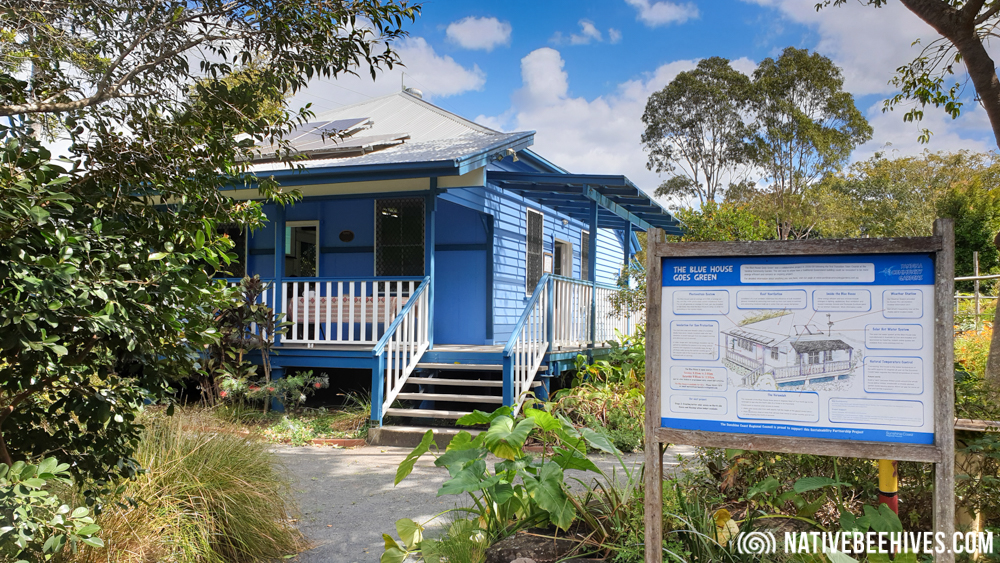
Another fully booked Stingless Bee Workshop run by Tim Heard from Sugarbag Bees and hosted by Yandina Community Garden was held Saturday 24 August. Apparently there was a large waiting list as well so these workshops are quite popular. Sue from Yandina Community Gardens was the host for the day and is quite involved in Permaculture with a passion for sustainability. The Community Garden is always looking for volunteers and has great opportunities for anyone to get their hands dirty. (Contact details at bottom of this page.)
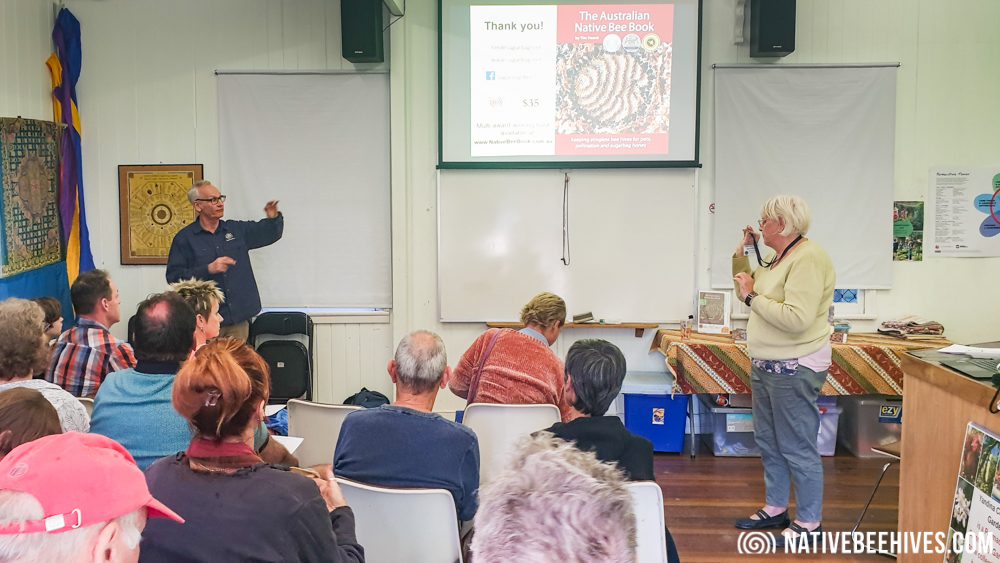
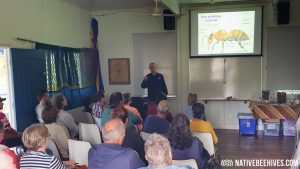
Tims workshops are usually a full day affair but this one was a trimmed version fitting in to four hours but still covered a lot of info in the slideshow presentation and also a chat and hive splitting demonstration in the gardens.
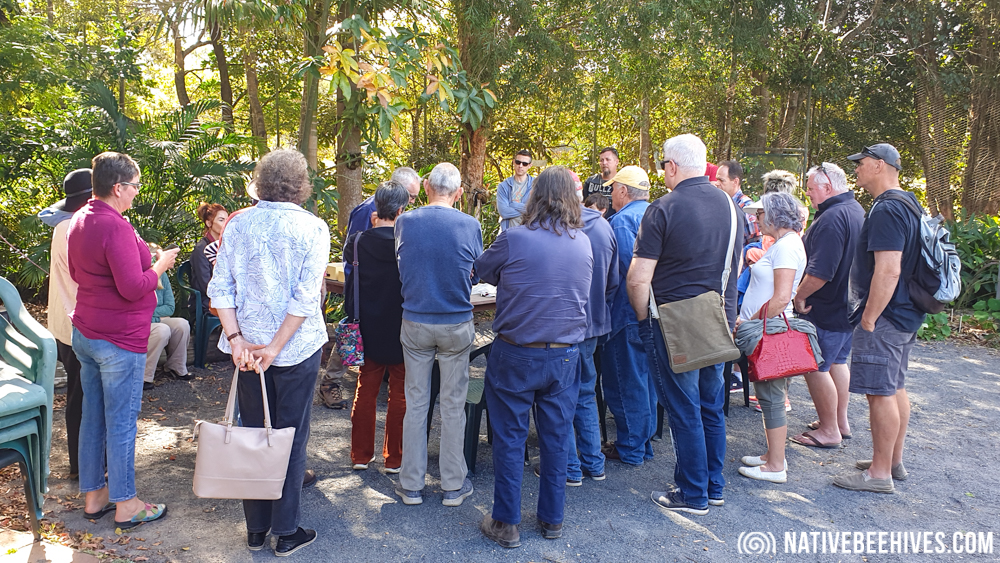
Tim talked about his hive design and features. His latest version has a clear brood separator plate so you can place some tape over the access gap to block bees accessing the honey super and you will be able to observe the bees progress through the clear panel for a while, possibly months.

Tim also talked about the Budding process, giving a quick demonstration of how to set it up and what you can expect. This process can take a long time and there’s quite a few little things to look out for to create a successful second colony.
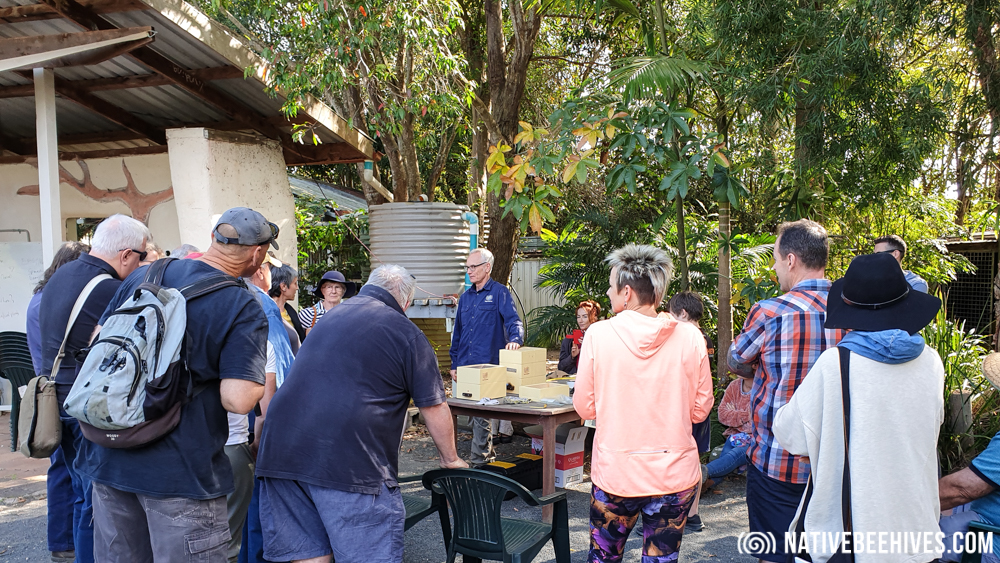
The hive split at the perfect place, the “Advancing Front” which is where the new and old sections of the brood meet, so there’s a small gap which makes separation quite easy.
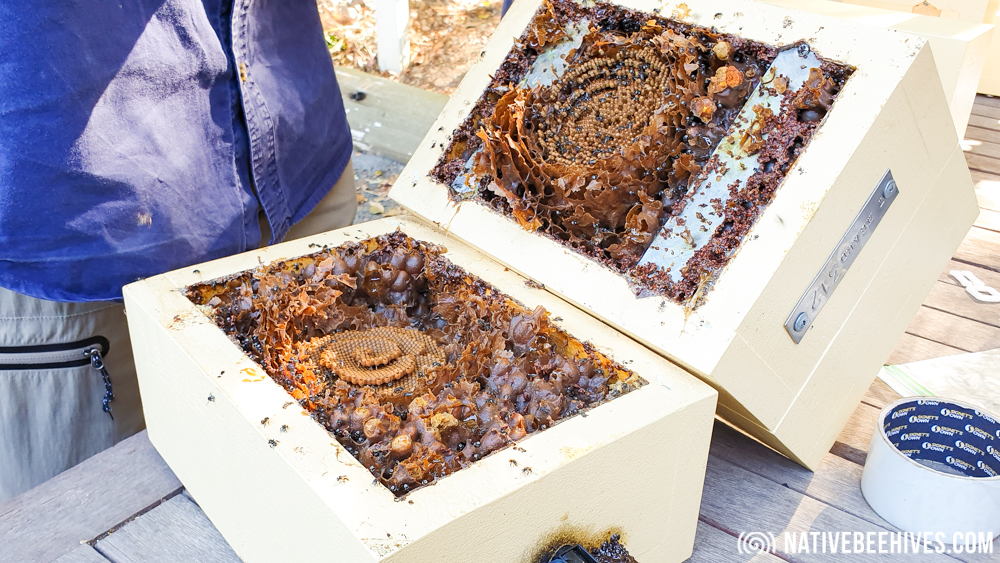
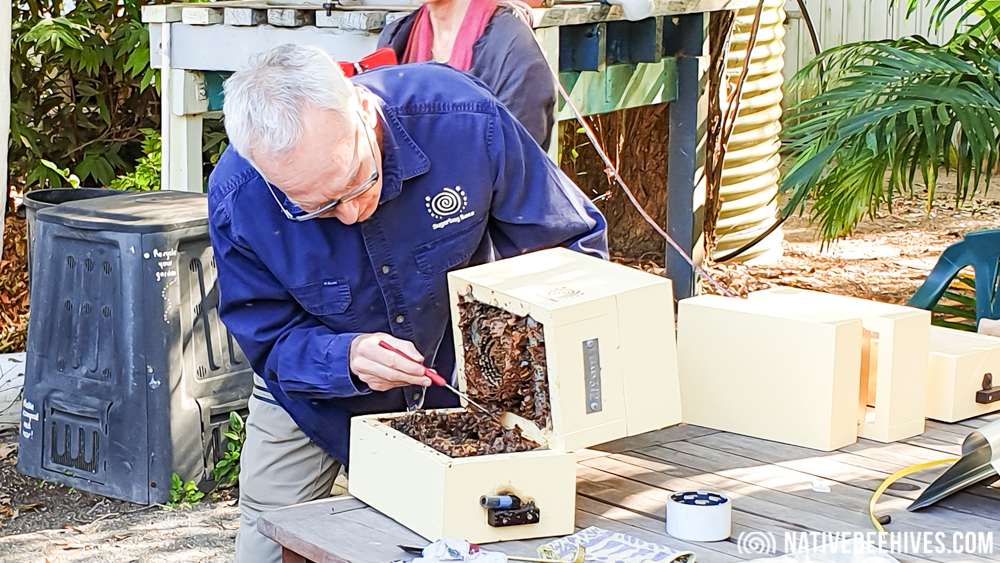
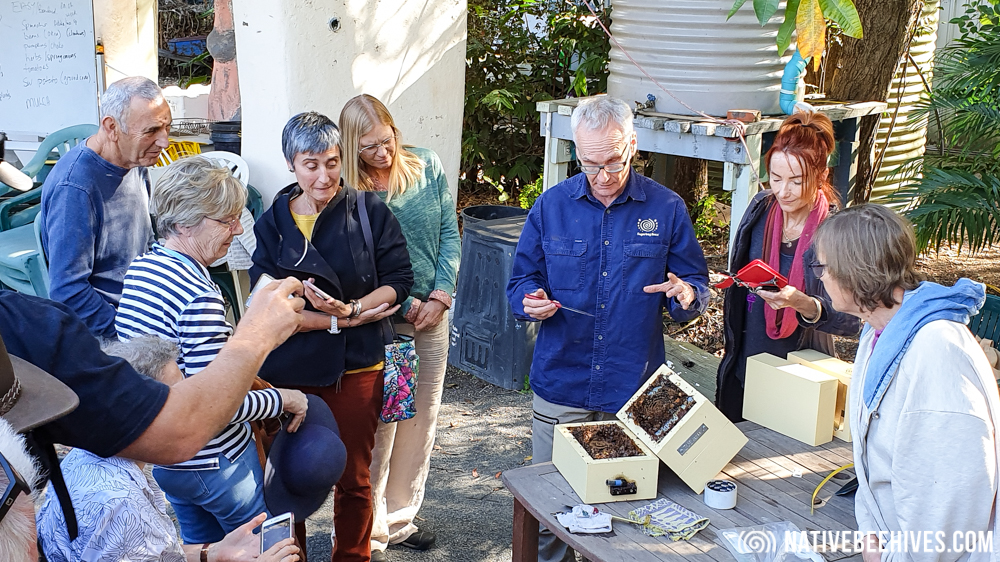
Tim fielded plenty of questions from the enthusiastic group. Some attendies hadn’t yet bought a hive and were just looking in to it and others had already built up a collection of hives and were looking for a few tips to help the bees along.
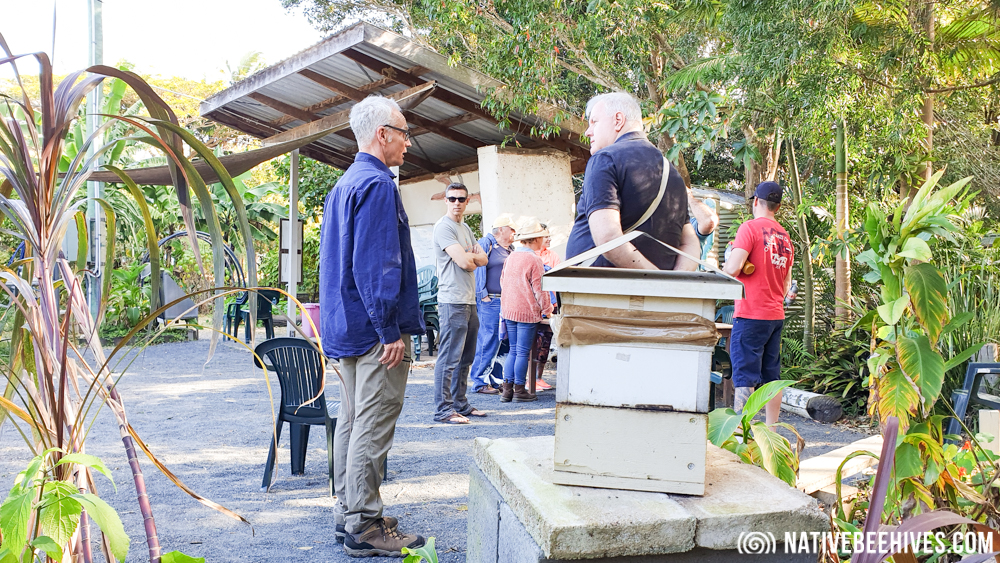
Some interesting points from the presentation
- Honey is made from nectar, not pollen.
- Stingless Bee Honey doesn’t crystalise because it has a high moisture content.
- Tomatoes in greenhouses need hand buzz pollination, in the field Tomatoes are naturally pollinated
- Bumble Bees can buzz pollinate but aren’t allowed in Australia as they may cause problems for native species
- Propolis is a mixture of wax made by bees and plant resin
- There’s around 25,000 species of bee in the world with mainly one being used for human food pollination
- Some bees carry pollen internally, so they don’t make very good pollinators because they don’t spread the pollen very well
- Bees are related to Wasps and Ants
- Only social bees collect Pollen to feed to babies
- Pollen is high in protein
- Some solitary bees that emerge in long tube segment type nests will wait until the newest has emerged before they will attempt to leave, waiting their turn. Carpenter Bees in that same segmented nest structure can emerge and scramble over new bees that haven’t emerged yet
- Stingless Bees can use their Antennae to taste each other to work out if they know each other
- Solitary Bee Hotels may be best dispersed and not all placed together, to avoid the spread of disease
- Native Bees do better in suburbs due to the diverse and prolific urban gardens we have
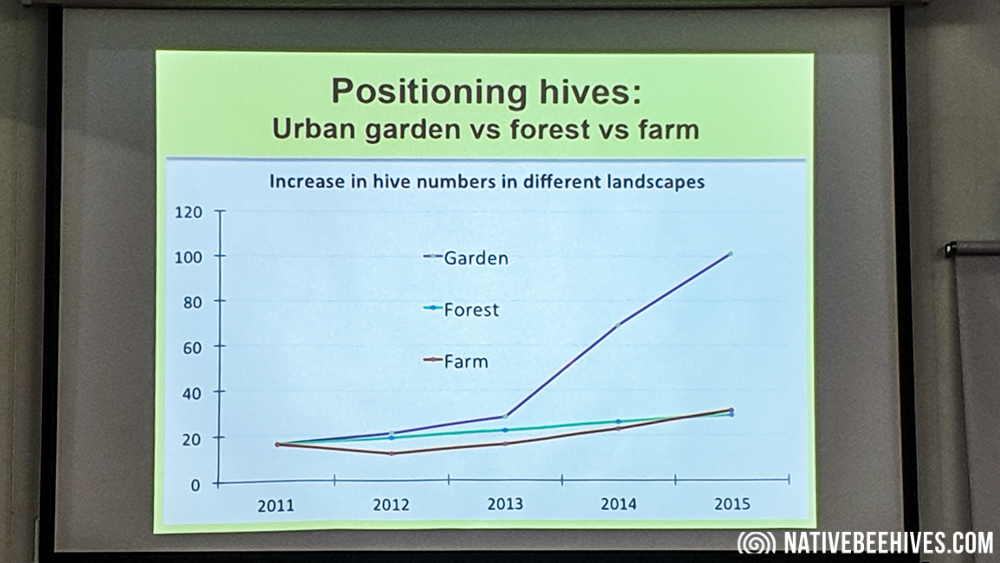
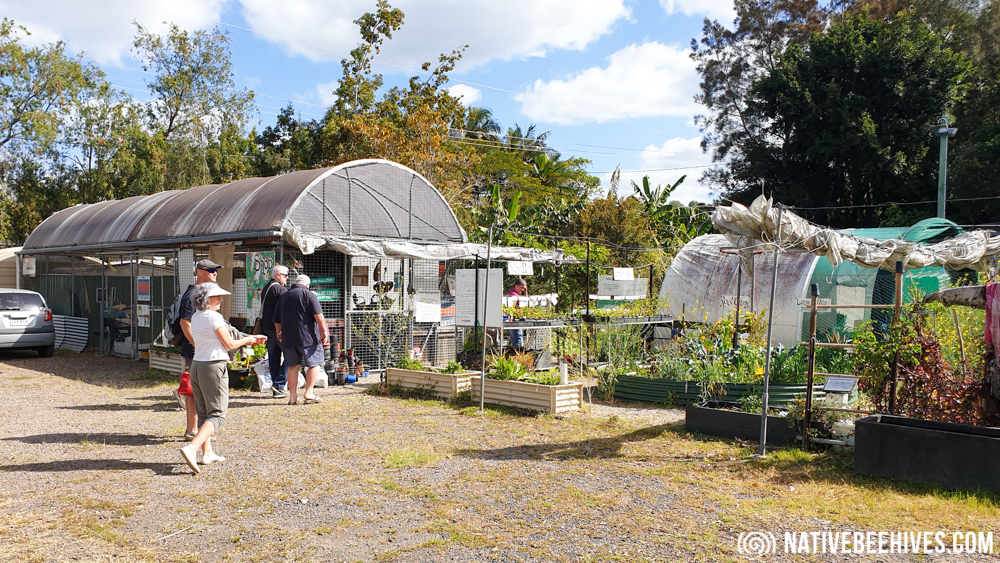
Yandina Community Gardens has quite an elaborate garden and also sells plants and runs regular garden tours and workshops.
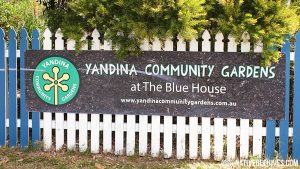
Yandina Community Gardens
41 Farrell street, Yandina
https://yandinacommunitygardens.com.au
Let people know about your Native Bee related event! Send me an email using the website contact form
